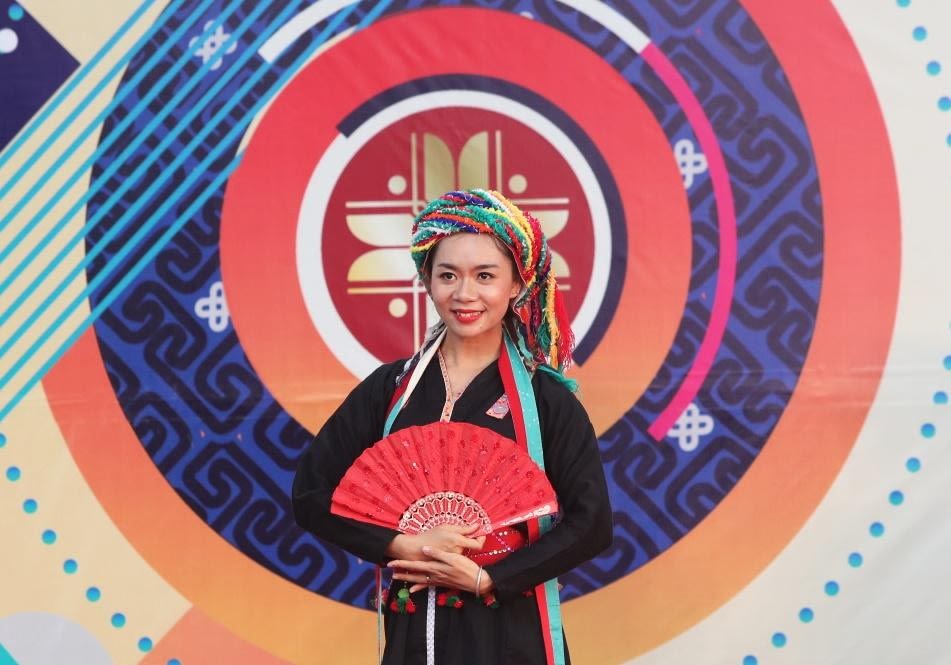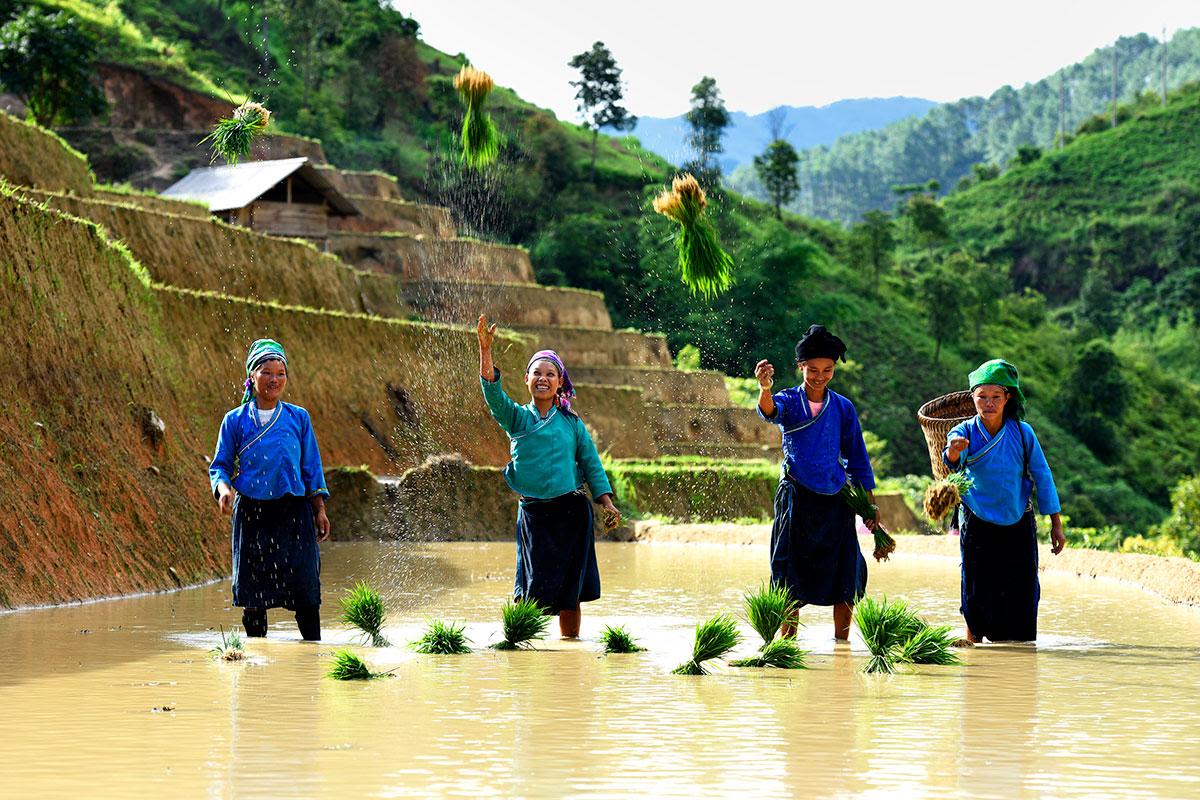
Nung is one of the largest ethnic minority groups in Vietnam and its members mainly inhabit the northern mountainous provinces.
1. Origin
The Nung people migrated to Vietnam from Guangxi (China) about 200-300 years ago.
2. Population
According to a survey of 53 ethnic minority groups in 2019, the Nung ethnic group has a population of 1,083,298, with 546,978 men and 536,320 women.
3. Language
The Nung people speak a Tay-Thai language of the Tai-Kadai family.
4. Geographical distribution
The Nung people mainly live in Lang Son, Cao Bang, Bac Kan, Thai Nguyen, Ha Giang, Bac Giang, Quang Ninh, Lao Cai and Yen Bai Provinces.
5. Main characteristics
Housing: The Nung people’s typical house is a three-floor stilt house roofed with tubular tiles. The ground floor houses livestock, poultry and farming tools, the second floor is the main living space, and the third floor is used to store food and other items. In front of a typical house is a space for drying. In some areas, the Nung people build earthen houses called “trinh tuong”. In the houses of the Nung people, stoves are not only used for cooking but also for warming, especially during the cold winter.

A Nung woman in the Then costume. (Photo: Khieu Minh)
A Nung woman in the Then costume. (Photo: Khieu Minh)
Costume: The traditional costumes of the Nung people are relatively simple and made from self-woven indigo-dyed raw fabric, with almost no decorations. Men wear shirts featuring unfolded collars and lines of fabric buttons. Women wear five-piece dresses with buttons on the right armpit which run down just past the waist. Nung women wear square scarves folded in a triangle on their heads. Nung men wear hats, especially when attending spiritual ceremonies.
Food: The Nung people have rice as their main staple and eat a wide range of foods made from it. They also enjoy special dishes during important festivals. At the Lunar New Year festival, the Nung people butcher capons and make long banh chung. At the end of the first lunar month, the Nung people usually make desserts made from rice and young mug wort leaves. Roasted pigs stuffed with clausena leaves are a must during weddings and birthdays.
Religion and beliefs: The Nung people are primarily polytheists. They usually worship three generations of ancestors. The worship of gods is conducted through festivals to pray for good weather and bumper crops. Their ways of worship and behaviours are also influenced by Buddhism, Confucianism and Taoism. Shamans play a notable role in the Nung people’s practice of their belief.
Arts: The most outstanding features of the Nung people’s traditional arts is Then, a type of performance that is both artistic and spiritual. The Then master is the creator of both lyrics and melodies.
The dan tinh is a musical instrument without keys so the Then shaman has the freedom to improvise the music. Then has many spiritual elements when it is associated with praying ceremonies, but it also contains elements of festivity, when it is connected with life events of a person or New Year celebrations.
Another form of folk songs popular among the Nung people is sli. Sli a is a form of duet song exchanged between a pair of men and a pair of women.

Economic conditions: The Nung people cultivate in both flat and slope areas as well as in hills and gardens around their houses. Wet rice is the main plant of the Nung people. The growing and selling of anise products are also popular among the Nung people. They also grow other plants such as the mu oil tree, sasanqua camellia, tobacco, sugarcane, bamboo, canarium, cotton and indigofera.
Animal husbandry plays an important role in the economic life of the Nung people. Common livestock include water buffalo, cow, goat, pig, chicken, duck, goose, dog, cat, bee, silkworm and fish.
The Nung people are skilled in many handicraft trades such as weaving, smithing, casting bamboo weaving, woodwork, paper making and rooftile making. The smithing trade is maintained and developed in Phuc Sen Commune, Quang Hoa District, Cao Bang Province.
With their habitation areas in provinces at the Vietnam-China border, the Nung people are active in cross-border trade activities. Besides engaging in border trade, the Nung people also do other jobs such as loading and unloading goods, motorbike transport and hired workers in agricultural production. These activities take place in both Vietnam and across the border.
Education: According to a survey of 53 ethnic minority groups in 2019, the rate of literacy among those aged 15 and above is 90%, the primary school attendance rate is 100.9%, the secondary school attendance rate is 97.2%, and the high school attendance rate is 73.4%.
